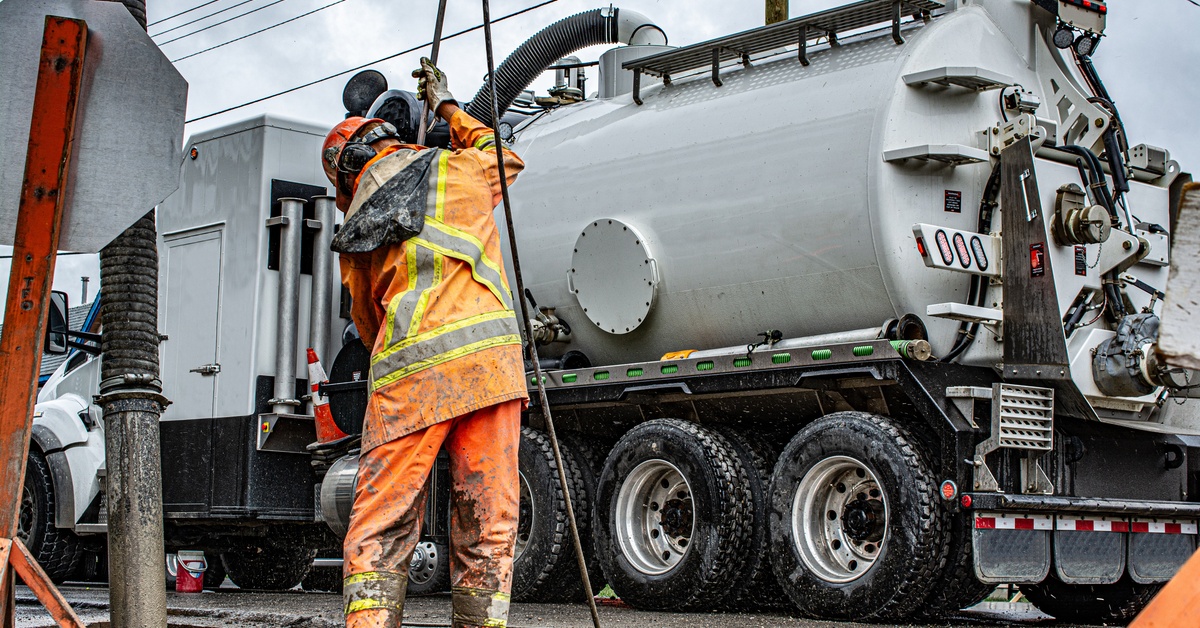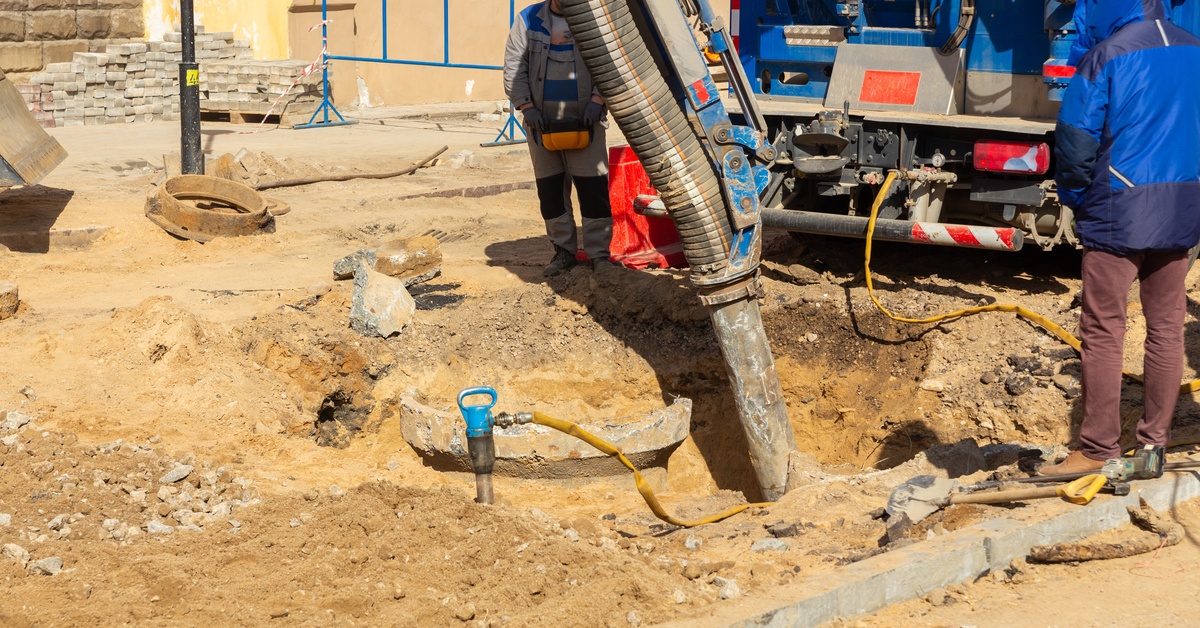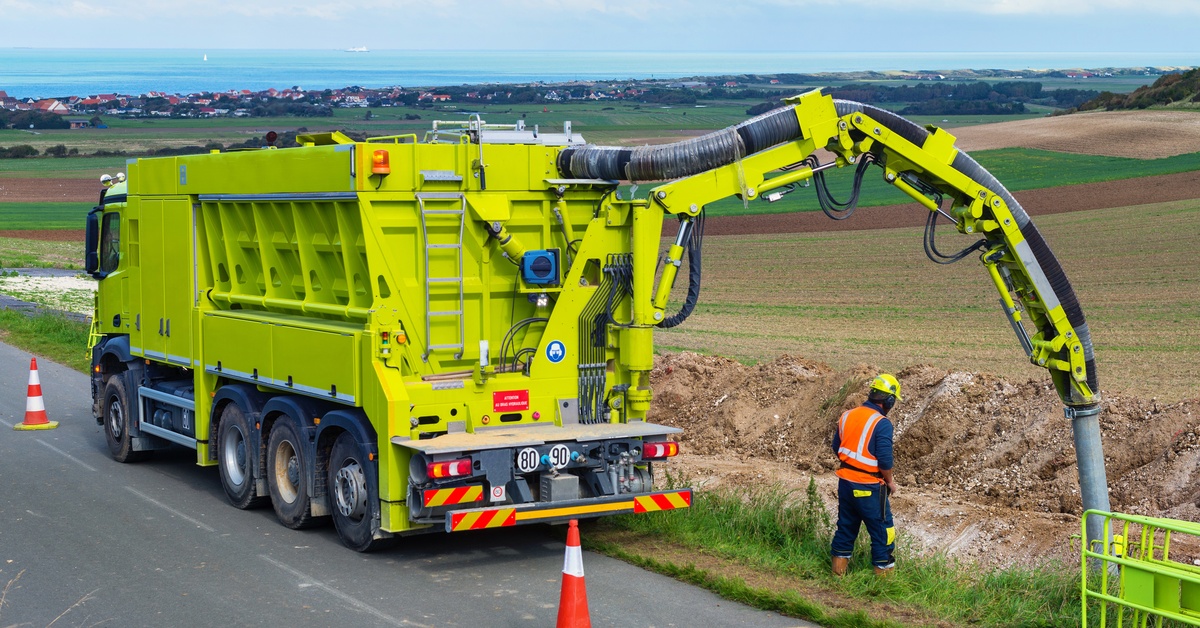
Author: Tyler Mashek
Excavation work always carries inherent risks, from damaging buried utilities to maintaining the safety of your crew. Traditional digging methods, while familiar, can introduce variables that may lead to costly accidents and project delays. That’s why many teams have begun exploring hydro excavation.
In many instances, hydro excavation is safer than standard digging methods. Discover why hydro excavation is the superior alternative and how it can provide a safer, more controlled approach for your operations.
Pressurized water and a powerful vacuum system are the core components used to excavate soil, avoiding direct contact with buried infrastructure. Unlike mechanical digging, which risks strikes from buckets or shovels, this method preserves the integrity of utility lines.
Using hydro excavation equipment means that fragile or aging systems like gas pipelines and electrical cables remain unharmed. This approach reduces the potential for service disruptions and expensive repairs. The controlled nature of the excavation also eliminates metal-to-metal contact with sensitive utilities.

Hydro excavation offers an unparalleled level of accuracy, whether you’re working on a small, targeted area or a large-scale project. The controlled stream greatly diminishes the chance of accidental over-digging that could compromise nearby structures. Your team can confidently operate with hydro excavation equipment thanks to its surgical precision.
This accuracy is essential for preventing unintended damage to adjacent foundations or landscapes. The focused stream of water allows for careful soil removal without disturbing the surrounding environment.
Traditional excavation frequently places workers in proximity to heavy machinery and open trenches, heightening injury risks. Hydro excavation allows your crew to maintain a safe distance while the equipment performs labor-intensive tasks.
A water stream and suction hose’s dig tube manage the soil removal, keeping personnel away from potential hazards. This method reduces physical strain and minimizes the likelihood of accidents associated with manual digging or machine operation. Creating a safer work environment with efficient excavation that exposes your team to fewer direct risks benefits your operation’s morale and bottom line.
This excavation method is far less invasive than conventional digging techniques, which can preserve the worksite’s natural state. Hydro excavation also minimizes soil disturbance thanks to the focused stream of water, which protects nearby vegetation and maintains the integrity of the surrounding terrain.
When land stewardship is a priority, hydro excavation is safer than standard digging methods, as the foundation of the soil is disrupted less, keeping the surrounding environment stable. The precision of the process avoids unnecessary landscape destruction.
The immediate suction of excavated soil and debris prevents the accumulation of heavy materials around your machinery. This continuous removal process reduces the mechanical strain on your vehicles and attachments.
With less buildup, your hydro excavation equipment operates under optimal conditions, improving overall safety. This approach lowers the probability of breakdowns or operational accidents during a project. Consequently, your machinery experiences less wear and tear, contributing to a longer service life and more reliable performance.
The effectiveness of this method extends to difficult ground conditions, including frozen or heavily compacted soil. The heated water breaks through tough layers that would stall conventional machinery. This adaptability means your projects can proceed consistently and safely throughout the year, regardless of the season. Your operations maintain a high level of performance, even when faced with environmental challenges.
The integrated vacuum function offers benefits other than the immediate containment and removal of excavated materials from the site. This function prevents debris from scattering, which would otherwise create potential hazards for workers and machinery.
A cleaner worksite improves overall safety by reducing the risk of slips, trips, and falls. The controlled containment of slurry also simplifies final cleanup and disposal. Maintaining a clear and organized operational area contributes to a more structured and safer project environment, streamlining project operations.
The precision afforded by hydro excavation reduces the chance of over-excavation, a common cause of compromised trench stability. Using traditional digging methods obscures the site and increases the risk of digging further than intended, potentially causing the soil to collapse.
Removing only the necessary amount of soil maintains the structural integrity of the surrounding ground, which in turn lowers the risk of a trench collapse during excavation projects. This proactive approach to safety helps prevent one of the most dangerous types of worksite accidents.

Hydro excavation aligns well with the stringent safety and environmental standards established by regulatory bodies like the Occupational Safety and Health Administration (OSHA) and the Pipeline and Hazardous Materials Safety Administration (PHMSA).
Meeting these guidelines is nonnegotiable for industries that regularly rely on heavy equipment. Using compliant equipment demonstrates a commitment to safety and responsible practices. Further, adherence protects your business from potential fines and legal liabilities while reinforcing a culture of safety.
The nonmechanical nature of this excavation technique makes it the ideal choice for working near delicate structures. Hydro excavation allows for digging adjacent to building foundations, fiber-optic cables, or aging pipelines where even minor vibrations could cause damage. The risk of costly disruptions and repairs substantially decreases with this method.
You can help your team confidently excavate in congested or sensitive areas without fear of causing collateral damage. The capability of working in tight spaces also makes hydro excavation a superior choice for urban or industrial environments.
Hydro excavation produces far less noise compared to the loud operation of heavy machinery. Noise reduction creates a safer auditory environment for workers and reduces the need for extensive hearing protection.
The absence of heavy-impact tools also means there are no ground vibrations that could destabilize nearby structures or sensitive equipment. The quieter and smoother operations are less disruptive to the surrounding community.
By systematically minimizing utility strikes and enhancing worker safety, hydro excavation leads to substantial long-term savings. Your business will experience fewer project delays, reduced repair expenses, and a lower incidence of liability claims. These factors combine to make hydro excavation an economically sounder choice over the long run.
Elevate your operational standards by integrating this advanced technique into your workflow. Explore our range of hydro excavation solutions today to find the right fit for your team.